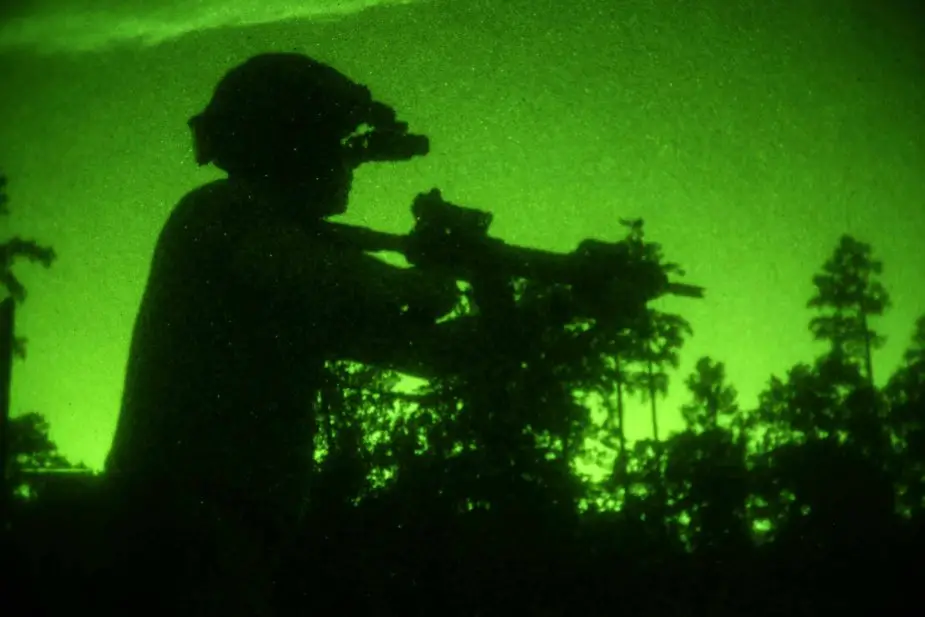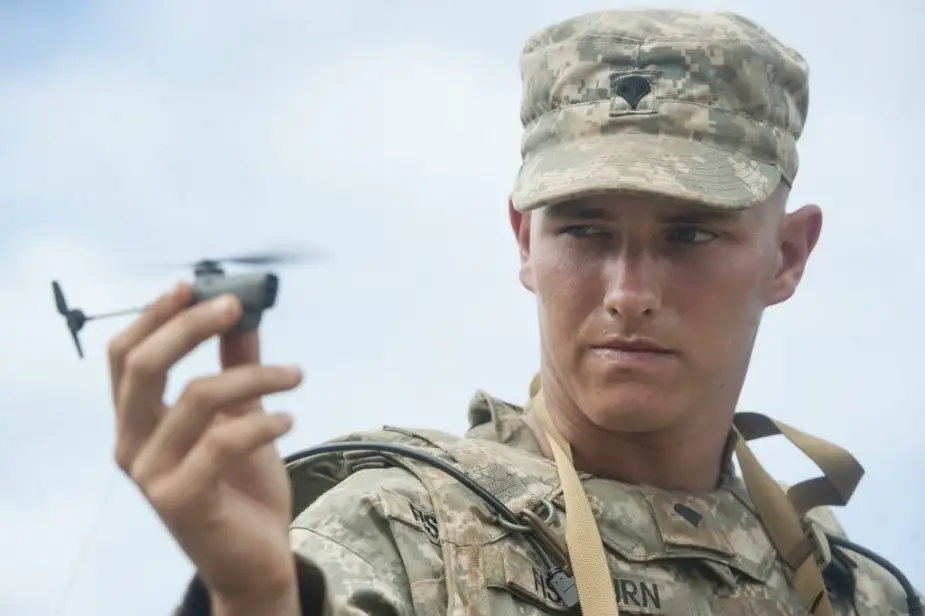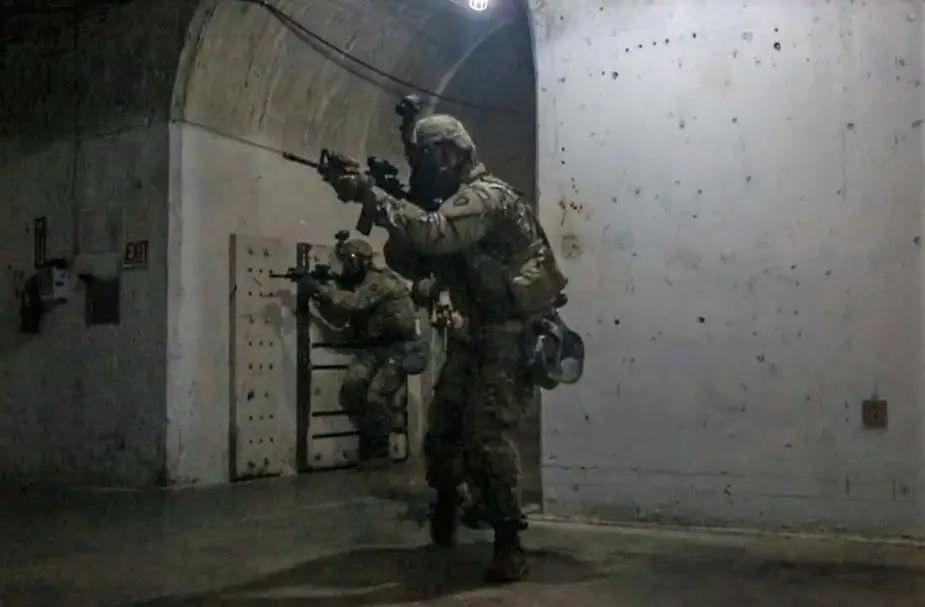U.S. Army to discontinue Asymmetric Warfare Group and Rapid Equipping Force efforts in 2021
U.S. Army senior leaders announced plans to discontinue both the Asymmetric Warfare Group and Rapid Equipping Force, as the service shifts funding and resources from counter-insurgency operations to large-scale combat across multiple domains. Devon Suits, Army News Service, explains.
Follow Army Recognition on Google News at this link

U.S. Asymmetric Warfare Group members conduct pistol and rifle drills from different firing positions as part of the Operational Advisor Training Course at Fort A.P. Hill, Va., Sept. 11-13, 2018. The drills conducted were designed to improve accuracy and efficiency under stressful situations while transitioning from a rifle to a pistol (Picture source: U.S. Army/Asymmetric Warfare Group)
For more than 14 years, the AWG and REF have provided Soldiers with rapid materiel solutions and operational advisory support to close capability gaps during operations in Iraq, Afghanistan and elsewhere. Both organizations fall under U.S. Army Training and Doctrine Command and are slated to close no later than Sept. 30, 2021. For the next year, AWG and REF leadership will prioritize a seamless transition of personnel, all while simultaneously moving programs and equipment to other agencies throughout the force, TRADOC officials said.
Mission
The REF bridged gaps between tactical-level requirements for materiel solutions and the long-term Joint Capabilities Integration and Development System process across most commodity areas. Established in 2002 out of Fort Belvoir, Virginia, the REF provided Soldiers with non-standard equipment solutions to support mission demand, said Steven Sliwa, its deputy director. Later in 2006, the Army established the AWG, headquartered at Fort Meade, Maryland. During operations in Iraq and Afghanistan, the AWG provided operational advisory support to develop rapid solutions to enhance Soldier survivability. At the time, the AWG helped the Army avoid "tactical surprise" and fight back against an emerging improvised explosive device threat throughout the area of responsibility, said Lt. Col. Morgan Southern, the AWG Charlie Squadron commander.
During the height of the wars in Iraq and Afghanistan, the Army identified many institutional shortcomings. It was incumbent of both agencies to respond to these capability gaps, which led to the development of new doctrine, organization, training, materiel, leadership and education, personnel, and facilities, or DOTMLPF, throughout the ranks -- specifically for counter-insurgency operations, according to TRADOC officials.
In a targeted effort to streamline the materiel process, the Army granted REF leadership the authority to approve urgent requests, Sliwa said. Soldiers could fill out a "REF 10-liner" -- a 10-question form -- to identify a tactical problem and various characteristics, and request REF to find a solution. "The goal has always been speed," as the REF worked to equip Soldiers within 180 days of receiving a 10-liner request, Sliwa added. Similarly, AWG stepped into an operational advisory support role to assist formations across a broad range of missions at the point of need, Southern said.

U.S. soldiers in forward-deployed small tactical units were unable to improve and expand situational awareness due to operating in difficult terrain. The Rapid Equipping Force equipped these units with the Squad ISR capability. These small UAS assisted soldiers in viewing tactical video feeds increasing situational awareness and bridging the tactical ISR gap. For more than 14 years, the Asymmetric Warfare Group and REF provided Soldiers with rapid materiel solutions and operational advisory support to close capability gaps during operations in Iraq, Afghanistan and elsewhere. (Picture source: U.S. Army/Rapid Equipping Force)
Counter-unmanned aircraft systems
The AWG and REF both focused on a range of Army challenges, working closely with other Army and Defense Department agencies, along with academia and commercial research, development, and technology communities. Some accomplishments include developing solutions to counter unmanned aircraft systems and preparing the Army for underground operations.
The growing threat of unmanned aircraft systems, coupled with the speed of innovation of off-the-shelf UAS technology, all supported the need for counter-UAS policy. "We identified the emerging threat and conducted a variety of global scout activities to help the Army understand … before it materialized on the battlefield," he said. The AWG focused on requirements to help fend off an opposing UAS, all while informing commercial solutions to ensure the survivability of Army-owned assets. The Army's counter-UAS response pushed the development of doctrine and helped improve training, Southern added. The REF also played a role in bolstering the Army's counter-UAS capability, Sliwa said. The agency organized the first counter-UAS experiment at Yuma Proving Grounds, Arizona.
The result of that experiment led to REF's procurement of the DroneDefender counter-UAS system, Sliwa said. Visually similar to a rifle, the defender system allowed Soldiers to disrupt an adversary's UAS through directed energy. The Army's counter-UAS response "is a good example of how both organizations worked closely to identify a materiel solution … because the AWG had a full understanding of how [UASs] would be employed," Sliwa added.
Today, the Army continues to lead a joint effort to align counter-UAS systems by enabling more "plug and play" technological capabilities, as part of the Joint Counter-Small Unmanned Aircraft Systems office.

U.S. soldiers conduct subterranean training at Fort Hood, Texas, Oct. 9-19, 2018. The subterranean environment presents challenges in regards to air quality, thermal and mechanical breaching, and avoiding chemical, biological, radiological, and nuclear threats. Asymmetric Warfare Group applied these capabilities utilizing operational advisors to analyze future army requirements. (Picture source: U.S. Army/Asymmetric Warfare Group)
Underground operations
The AWG and REF also helped close a capability gap tied to subterranean operations. Research on underground operations started in Afghanistan, where units encountered increase use of water-management channels, known as a Karez, by enemy forces, Southern said. "The AWG had operational advisors on the ground with companies and platoons in Afghanistan," he added. "When Soldiers started to encounter this challenge, AWG personnel begin to assist them at the point of need." AWG quickly developed techniques, tactics and procedures, and later shifted Army operations in the subterranean environment.
The REF also provided a wide range of solutions to maintain operational effectiveness while operating underground. Solutions included compact and secure network communications; personnel tracking; chemical, biological, radiological and nuclear interface upgrades; relay nodes; and wireless video capabilities, REF officials said.
Moving on
As the former director of REF, Sliwa said he is incredibly proud of all the hard work the organization did to support the warfighter. “We believe our best always came after we partnered with other agencies and organizations,” he said. “I am excited to see how the Army takes [the REF] on in the future.”
Similarly, Southern is humbled to have served two tours with the AWG. He is a former deputy commander of AWG, troop commander, and officer-in-charge of the operations and research analysis cell, he said. "I am extremely proud to have served in this unit and witness all that this unit has done for our Army," Southern said. "AWG's contribution has been tremendous" as it maintained its primary mission -- help others succeed.
To ensure the value of the organization’s work over the past 14 years is not lost, all lessons learned will be maintained by the U.S. Army Combined Arms Center via the Center for Army Lessons Learned, Centers of Excellence, and other TRADOC enterprise stakeholders.


























